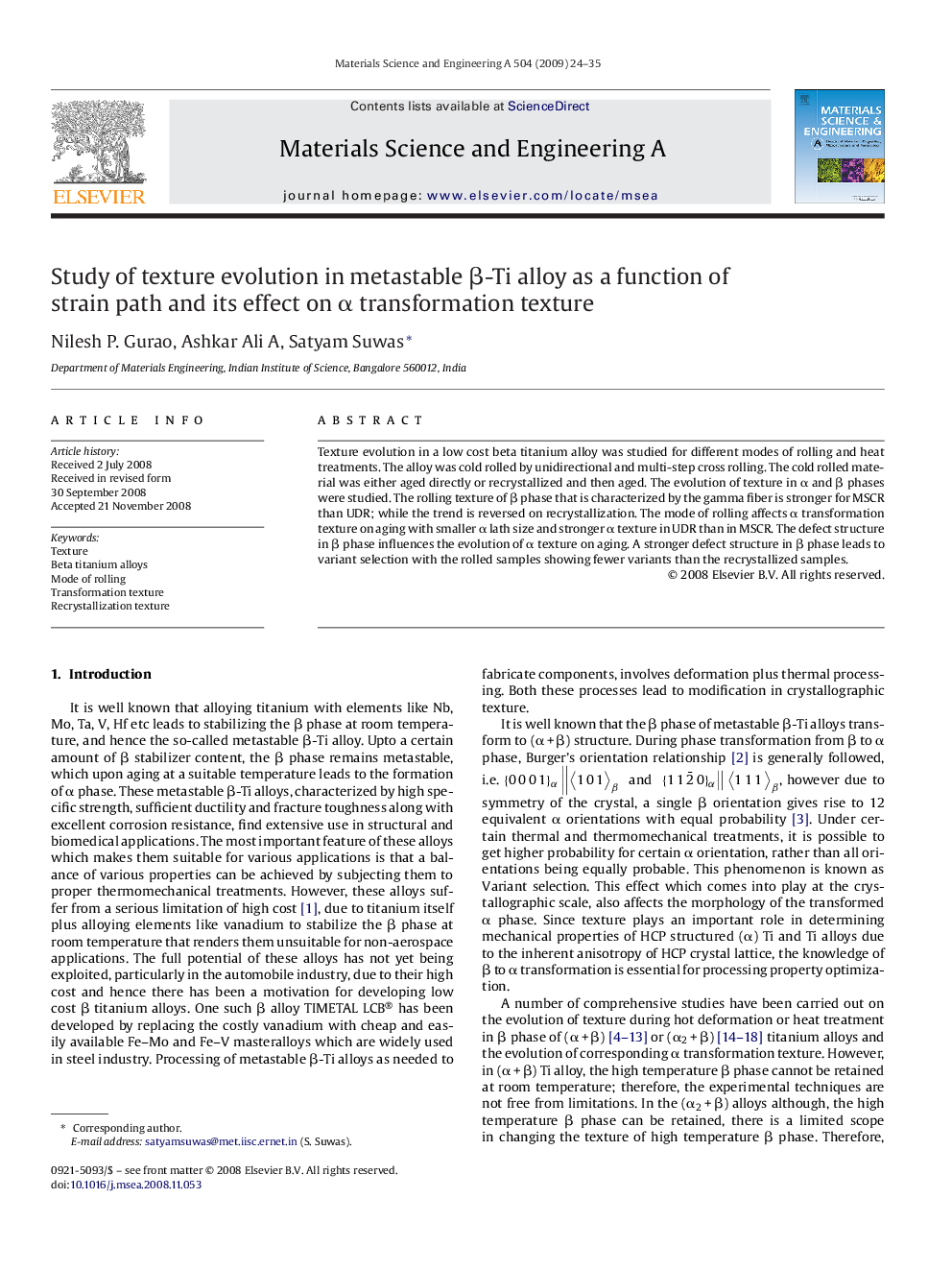| Article ID | Journal | Published Year | Pages | File Type |
|---|---|---|---|---|
| 1581127 | Materials Science and Engineering: A | 2009 | 12 Pages |
Texture evolution in a low cost beta titanium alloy was studied for different modes of rolling and heat treatments. The alloy was cold rolled by unidirectional and multi-step cross rolling. The cold rolled material was either aged directly or recrystallized and then aged. The evolution of texture in α and β phases were studied. The rolling texture of β phase that is characterized by the gamma fiber is stronger for MSCR than UDR; while the trend is reversed on recrystallization. The mode of rolling affects α transformation texture on aging with smaller α lath size and stronger α texture in UDR than in MSCR. The defect structure in β phase influences the evolution of α texture on aging. A stronger defect structure in β phase leads to variant selection with the rolled samples showing fewer variants than the recrystallized samples.
